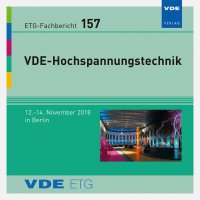145 kV Vacuum Circuit Breaker and Clean Air Instrument Transformer – Performance, Installation- and Operational Experience
Konferenz: VDE-Hochspannungstechnik 2018 - ETG-Fachtagung
12.11.2018 - 14.11.2018 in Berlin, Deutschland
Tagungsband: VDE-Hochspannungstechnik 2018
Seiten: 6Sprache: EnglischTyp: PDF
Persönliche VDE-Mitglieder erhalten auf diesen Artikel 10% Rabatt
Autoren:
Heinz, Thomas; Teichmann, Joerg; Wethekam, Stephan (Siemens AG, Berlin, Germany)
Helbig, Dirk (Siemens AG, Erlangen, Germany)
Prucker, Udo (Trench, Bamberg, Germany)
Konermann, Martin; Engel, Marcel; Wolf, Christian (Netze BW, Stuttgart, Germany)
Inhalt:
The global society depends on reliable, economical and sustainable systems of energy generation, transmission and distribution. The realization of these systems is the common goal of future-oriented transmission and distribution system operators (TSOs, DSOs) and manufacturers. SF6 is today’s most applied gas for switching and insulation in high voltage (HV) equipment, with excellent technical characteristics, but also strong global warming potential (GWP). Due to this fact, TSOs, DSOs and manufactures handle the gas with maximum care. For further improvement of sustainability, new innovative products are required: on the one hand with the well-known performance and reliability, on the other hand with the lowest possible global warming impact without compromising environmental, health and safety topics. To achieve this “mission impossible” the two main functions “switching” and “insulation” were separated. For switching, a proven principle was further developed for application to high voltages. Whereas millions of vacuum interrupter (VI) units are used in medium voltage (MV) switchgear - mainly in primary distribution applications - worldwide, their use in HV is rather rare. After intensive research and development in this area, 72,5 kV live tank vacuum circuit breakers (VCB) are in service since 2010. Based on that successful experience, a single break 145 kV live tank vacuum circuit breaker was developed and fully type tested to perform the switching and arc extinguishing activities in daily operation. This technology offers similar and partially even extended switching performance compared to existing SF6 technology at 145 kV: a rated short-circuit breaking current of up to 40 kA, a rated current of up to 3150 A, operating temperatures from -60deg C up to +55deg C without any additional heating systems, and up to 30 full short-circuit interruptions. Further advantages are easier handling during transport, installation and in operation - as well as during maintenance and when recycling. No maintenance efforts of the sealed-for-life VI units are required. The performance of the new breaker is fully type tested according to IEC 62271-100. For insulation in circuit breakers and instrument transformers, a “clean air” variant was chosen as highly compatible gas for our environment: technically processed and purified air with a mixing ratio of 80 percent nitrogen to 20 percent oxygen providing the insulation for the current-carrying conductors inside the housings of HV equipment. Current and voltage transformers with the proven performance of SF6 systems were developed in clean air technology. The performance of the new instrument transformers, both current and voltage, with clean air insulation is fully type tested and the results are presented. The combination of vacuum technology for switching and arc extinction and clean air as HV insulating medium, allows TSOs and DSOs to have a full HV equipment portfolio up to 145 kV available to operate their assets in a totally CO2-neutral process with a GWP of zero. The equipment combines the well-known high technical performance of SF6 systems with additional capabilities regarding temperature range and number of short-circuit interruptions and with reduced maintenance effort. The training and working procedures are simplified due to the application of the clean air insulation. Documentation and reporting efforts are reduced to a minimum. Gas-recycling is not required any more. Now, the first installation of the sustainable future-oriented technology for 145 kV has been completed in Germany at Netze BW. First installation and operational experiences are shown.


